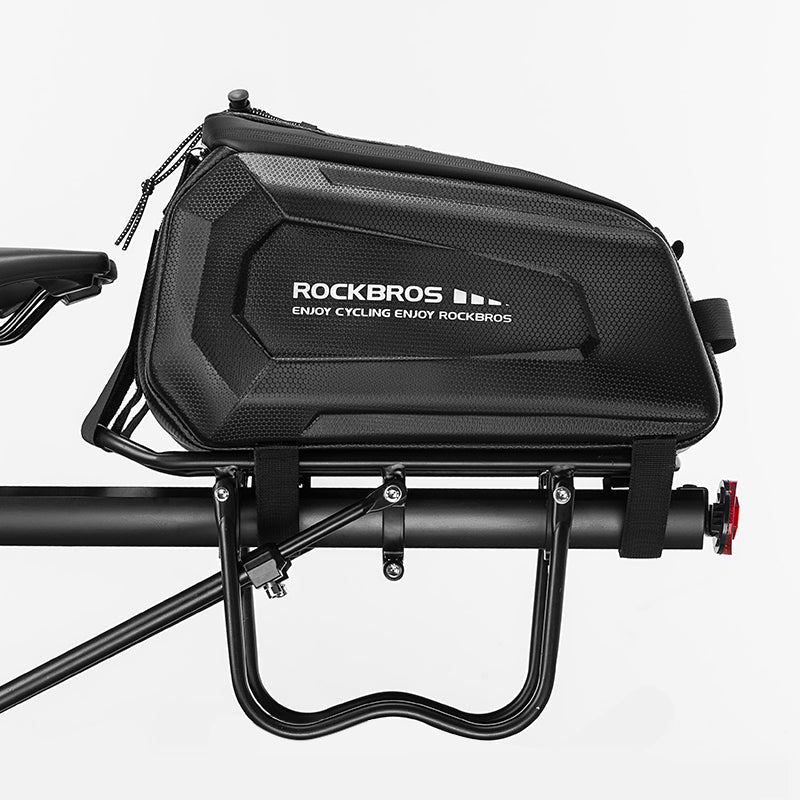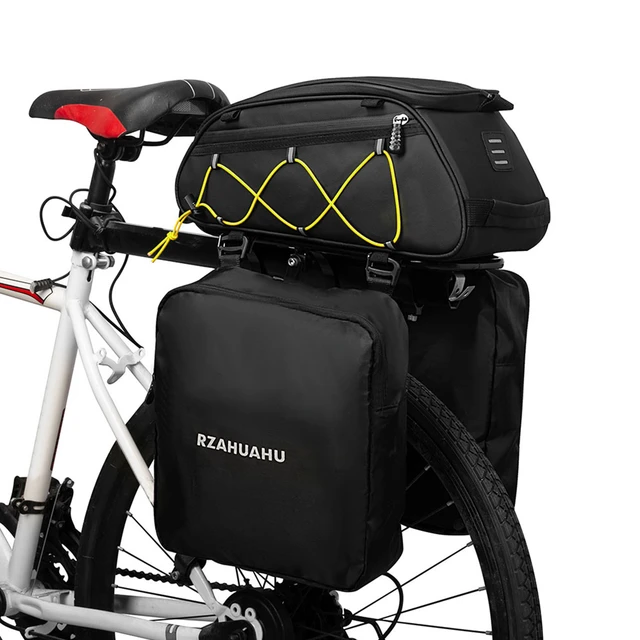I. Introduction to Bicycle Trunk Bags
A. Defining the Bicycle Trunk Bag
The Bicycle Trunk Bag is a versatile cycling accessory designed to attach to the rear rack or seat post of a bicycle, providing practical storage for essentials during rides. This essential piece of gear offers a convenient way for cyclists to transport items, such as tools, spare tubes, snacks, and personal belongings, while on the go.
B. The Evolution and Adaptation of Trunk Bags
The evolution of trunk bags has been shaped by the changing needs of cyclists. Originally conceived for touring and long-distance cycling, trunk bags have adapted to accommodate shifting urban commuting trends and the diverse requirements of different cycling disciplines. This evolution has resulted in modern trunk bags that cater to a wide range of cyclists, from commuters to long-distance tourers.
C. The Benefits of Utilizing a Bicycle Trunk Bag
Bicycle trunk bags offer numerous benefits, including enhanced carrying capacity, improved organization, and streamlined access to essentials during rides. Additionally, these bags contribute to a more comfortable cycling experience by relieving the burden of carrying items in pockets or backpacks. The use of trunk bags also contributes to the overall safety of cyclists by reducing the potential for distraction or interference with cycling maneuvers.
II. Design and Features of Bicycle Trunk Bags
A. Structure and Materials
Trunk bags are typically constructed from durable, weather-resistant materials such as nylon, polyester, or synthetic fabrics. These materials provide protection against the elements, ensuring the contents remain safe and dry during rides. Additionally, trunk bags often feature a reinforced structure, with stiffened panels or internal frames to maintain their shape and provide support for the carried items.
B. Storage Capacity and Compartments
The design of trunk bags incorporates various compartments, including main storage areas, external pockets, and specialized sections for specific items such as water bottles or small tools. The storage capacity of trunk bags can vary, with options ranging from compact models suitable for daily commuting to larger, multi-day touring bags with expanded storage capabilities.
C. Attachment and Security Mechanisms
Bicycle trunk bags utilize attachment systems that securely fasten the bags to the rear rack, seat post, or pannier frame of a bicycle. These systems often feature adjustable straps, Velcro fastenings, or quick-release buckles to ensure a snug fit while allowing for easy installation and removal. Additionally, many trunk bags are equipped with reflective accents or attachment points for lights, enhancing visibility and safety during low-light conditions.
III. Practical Uses and Versatility

A. Carrying Essentials and Accessories
One of the primary uses of a bicycle trunk bag is to conveniently carry your essentials and accessories while cycling. This includes items such as your phone, wallet, keys, a small toolkit, a spare tube, a mini pump, snacks, a water bottle, and any other items you may need during your ride. Having these items easily accessible in a trunk bag can save you the hassle of carrying them in your pockets or wearing a bulky backpack.
Additionally, many trunk bags come with multiple compartments and pockets, allowing for better organization of your belongings. Some even have special features such as a padded compartment for electronics or a built-in rain cover to protect your items in case of unexpected weather.
B. Commuting and Urban Cycling
For commuters and urban cyclists, a trunk bag can be a game-changer. It provides a convenient way to carry your work essentials, such as a laptop, documents, a change of clothes, and toiletries. Instead of having to lug around a heavy and cumbersome messenger bag or backpack, a trunk bag offers a more comfortable and ergonomic solution. It also eliminates the discomfort of having a sweaty back from wearing a backpack during hot summer commutes.
Furthermore, many trunk bags have reflective elements or attachment points for bike lights, which can enhance your visibility and safety while riding in urban areas, especially during low-light conditions.
C. Recreational and Touring Cycling
While trunk bags are incredibly useful for everyday cycling needs, they are also well-suited for recreational and touring cyclists. Whether you’re going on a leisurely weekend ride or embarking on a multi-day tour, having a trunk bag allows you to carry the extra gear and supplies you’ll need for your journey.
Trunk bags typically have a larger carrying capacity compared to saddlebags or handlebar bags, making them ideal for packing items like a lightweight jacket, a first aid kit, camping gear, and other essentials for longer rides. Many trunk bags also feature attachment points for securing items with bungee cords or straps, providing an added level of versatility for carrying bulkier or oddly shaped items.
IV. Considerations for Choosing a Bicycle Trunk Bag

A. Compatibility with Bicycle Models
When choosing a trunk bag, it’s important to ensure that it is compatible with your specific bicycle model. Most trunk bags are designed to be universal and can be attached to a wide range of bikes, including road bikes, mountain bikes, and commuter bikes. However, it’s still important to double-check the compatibility and installation requirements, especially if you have a non-standard bicycle frame or seat post.
Some trunk bags attach to the rear rack with adjustable straps, while others may require a specific type of rack or mounting system. Additionally, certain bike frames and seat posts may have clearance or interference issues with certain trunk bag designs, so it’s essential to do your research or consult with a professional to find the best fit for your bike.
B. Weather Resistance and Durability
Since trunk bags are exposed to the elements while riding, it’s crucial to choose a bag that offers adequate weather resistance and durability. Look for trunk bags made from water-resistant or waterproof materials, such as nylon or polyester with a durable water repellent (DWR) coating. This will help protect your belongings from getting wet in case of rain or splashes from the road.
In addition to weather resistance, consider the overall durability and construction of the trunk bag. Pay attention to the quality of the zippers, seams, and straps to ensure that the bag can withstand the rigors of regular use and potential rough handling. A well-constructed trunk bag will provide years of reliable service and protect your items from damage.
C. Ease of Installation and Removal
Finally, consider the ease of installation and removal when choosing a trunk bag. Look for a design that offers a secure and stable attachment to your bike, without being overly complicated to install or remove. Many trunk bags feature adjustable straps or quick-release mounting systems, allowing for easy attachment to the rear rack or seat post.
Additionally, some trunk bags may have additional features that enhance the ease of use, such as carrying handles or detachable shoulder straps for off-the-bike portability. These features can be particularly useful if you need to carry the trunk bag with you when making stops during your ride or when using it for non-cycling purposes.
In conclusion, a bicycle trunk bag is a versatile and practical accessory that can enhance your cycling experience in various ways. Whether you’re a commuter, urban cyclist, recreational rider, or touring enthusiast, a trunk bag provides a convenient and efficient means of carrying your essentials and accessories while on the go. By considering factors such as compatibility, weather resistance, durability, and ease of use, you can choose a trunk bag that meets your specific needs and complements your cycling adventures.

